Applied Behavior Analysis, or ABA therapy, helps people who have autism spectrum disorder (ASD), especially kids. It works by looking at how the things around us shape the way we act. Then, it uses this knowledge to help increase positive behaviors and lower challenges. People who use applied behavior analysis follow teaching strategies that work for many kinds of learners. What are the two teaching methods of ABA? In this article, you will find more about the teaching strategies called Discrete Trial Training (DTT) and Natural Environment Teaching (NET). Both of these teaching strategies play a big part in ABA therapy and are known to be very helpful.
These ways of working in behavior analysis stand out because they use clear steps and the natural environment to help children with autism spectrum learn and grow. Each method helps teach positive behaviors in a way that fits what each person needs.
Understanding Applied Behavior Analysis (ABA) in the U.S.
Applied behavior analysis (ABA) in the U.S. uses different ways to help change behavior. It is about helping people, mostly kids on the autism spectrum, learn new skills. In aba therapy, people get positive reinforcement for good actions, and there are planned steps to help them learn and deal with challenging behaviors. Behavior analysts work in many places, using different teaching strategies like discrete trial training and natural environment teaching. The goal is to make a safe and helpful space in the natural environment that fits each person’s specific needs. Over time, this helps people get better at communication and grow their social skills.
The Role of ABA in Supporting Learners
ABA therapy helps to build a supportive learning environment for people with autism. The therapist uses different steps that fit each person. These steps help people get better with things like communication skills and how they talk to others. The goal is to help them join in, show more positive behaviors, and grow over time.
In aba therapy, there’s a big focus on helping people learn new things. Therapists use step-by-step plans, like giving a reward when someone does a task right. For example, when a child asks for help, the therapist might cheer them on or let them pick a favorite game.
ABA therapy also works on social skills very much. These skills are important because they help people join in with others at school or out in the world. In this kind of learning environment, people use ways like starting a chat or looking at someone when they talk. ABA therapy gives each person tools to get through tricky social parts and find it easier to connect, all while working on what makes them special.
Key Principles Guiding ABA Teaching Methods
The base of ABA teaching uses simple ideas, like positive reinforcement and breaking big tasks down into manageable steps. In ABA, positive reinforcement helps learners keep doing good things. You do this by giving rewards for every bit of progress, like saying “good job” or giving the child a snack they like.
Every goal in ABA is worked on step by step. The focus is on clear skills. It could be something like asking the child to put all blue blocks together or helping them wave at someone. The teacher makes sure the student gets each idea before moving forward.
ABA teaching also changes its plans to fit what each learner needs. Big steps are split into smaller, manageable steps. Teaching a child to tie shoes, for example, starts with easy parts, like how to make a knot. Each part is learned in order so that the child feels good and knows what to do at every stage. These important ideas help ABA make a lesson plan that is both structured and able to change when a student needs it.
Overview of Core ABA Teaching Methods
ABA methods use teaching strategies that are both structured and flexible. These methods help to meet the different needs of each learner. Discrete trial training is one such strategy. It breaks down skills and teaches one skill at a time. This is done in a controlled place, which helps to keep things simple.
On the other hand, natural environment teaching uses daily routines. It gives students a chance to learn in real-life situations and settings. This is often more interesting, and can make lessons more useful to them.
Both discrete trial training and natural environment teaching aim to help with skill acquisition. They also be used to build positive behaviors. When caregivers and teachers learn how these strategies work, they can use them better. They will be able to choose and adapt them for developmental goals and to fit everyday life.
Discrete Trial Training (DTT): Structure and Application
In discrete trial training (DTT), there are clear and structured steps. These steps help people understand how the learning process works. In every trial, a discriminative stimulus is given to the child. This makes it clearer what the target behaviors should be. When the child gives the right answer or shows the right behavior, positive reinforcement is given. This helps motivate the child and keeps them interested.
With this systematic way, behavior analysts can break down complex skills into smaller, easier parts. This helps make skill acquisition better for each child. DTT is often used in aba therapy because it works well for teaching academic skills and communication. This method is good for children with autism spectrum disorder or autism spectrum. It makes sure learning and progress fit the needs of every child.
Natural Environment Teaching (NET): Learning Through Real-Life Situations
Natural environment teaching (NET) uses real-life situations and everyday events to help young children learn new skills in natural settings. In this way, kids work on their academic skills and have good social interactions with people around them. This teaching style focuses on using natural reinforcers to make learning feel important to them, and it highlights learning opportunities that happen during the day.
With NET, children can use and show their new skills in different environments and with different people. This helps them get better at generalization of skills, not just learning something in one place. ABA therapists watch the child’s behavior as they go through these activities. They support the child’s learning by giving feedback that encourages positive behaviors and also give help if there are challenging behaviors. Each plan is made just for that child’s specific needs to help them do well in the natural environment.
Comparing Discrete Trial Training (DTT) and Natural Environment Teaching (NET)
Discrete trial training (DTT) and natural environment teaching (NET) are two different ways used in ABA therapy. DTT uses direct instruction and clear prompts. This means a child can practice the same skill many times in a row. It helps them learn specific things step by step. On the other hand, NET happens in natural settings. The focus here is on real-life situations and daily routines. This method lets kids learn through social interaction. They also grow their communication skills by doing regular activities. NET gives children the chance to use what they learn in many settings. This generalization of skills helps them handle new places and people. Both ways, whether using DTT or NET, can help the child pick up positive behaviors.
Similarities Between DTT and NET
Despite their differences, DTT and NET both work toward the same main goals in ABA therapy.
- Skill Acquisition: Each method helps people learn new skills, like academic, social, or daily life skills.
- Desired Behavior: Using positive reinforcement helps reach clear and repeatable results.
- Generalization of Skills: After new skills are learned, they are practiced so a person can use them in many places.
- Structured Progress: Taking things step by step helps people get better at each level before moving on.
These things show how DTT and NET both fit together well in aba therapy. This makes a good way to help learners improve, even if they face different challenges. Positive reinforcement, skill acquisition, and the generalization of skills all play a role in guiding people toward the desired behavior and learning new skills.
Key Differences in Approach and Outcomes
| Aspect | Discrete Trial Training (DTT) | Natural Environment Teaching (NET) |
|---|---|---|
| Learning Environment | This uses a set and quiet place to teach. | This happens in normal, daily settings. |
| Focus | The focus is on clear and single tasks. | It is about big skills you use in life. |
| Reinforcement Type | You get planned rewards like stickers or praise. | You get natural reinforcers which connect to what you are doing. |
| Flexibility | It sticks to a set way of teaching. | It changes to fit the person’s interests or routine. |
DTT is great for teaching in a set way with few distractions. Natural environment teaching (NET) helps people use these skills everywhere in real life. Each method uses a different learning environment and different ways to use rewards like natural reinforcers.
Choosing the Right ABA Teaching Method for Your Child
Choosing the right ABA education way depends on your child and what they need. There are different styles, like the clear and guided steps of DTT or the flexible and open feel of NET. Both these ABA therapy options can be changed to fit what helps your child the most.
A learning environment that gives help and matches your child’s growing goals will help them get better results. When you work with ABA therapists, they will look at your child’s needs. Then they will talk with you about what plans or ways could matter most for your child in a supportive learning environment.
Factors to Consider: Age, Needs, and Learning Style
When picking an ABA intervention, you need to think about the age, learning styles, and developmental milestones of the person.
- Young Children: Use structured ways like DTT. This helps build a good base for new skills.
- Developmental Milestones: Choose methods that fit where the child is at in their growth.
- Learning Style: Some kids learn best by seeing things or using their hands. Pick what suits them best.
- Academic and Social Skills: Paying close attention to these skills will help their behavior get better.
It is good to work with therapists to make sure you use the best approach for these things so there can be lasting success.
Collaborating with ABA Professionals for Individualized Plans
ABA therapists work with behavior analysis and use scientific data to help each child. They make a plan for every child. They watch for specific behaviors and focus on how to make things better. They make sure that what they do matches what the child needs.
Parents also get help by working with ABA therapists. These specialists talk with parents to set clear goals. They want to help kids learn and grow, whether that be in school, with friends, or during daily routines. They want to make life better for each child.
The ABA way is systematic and uses lots of data. Each step is planned to match what the child needs. Working together this way helps everyone do their best and keeps the child’s quality of life at the center.
Maximizing Success with ABA Teaching Methods
Success in ABA methods comes from having a positive and flexible learning environment. When you use both DTT and NET together, you can deal with challenging behaviors. This helps with a child’s overall development.
When there are many kinds of learning experiences, ABA methods help kids make meaningful progress. They also support real change that lasts for them in their learning environment.
Integrating DTT and NET for Holistic Learning
Holistic learning in ABA teaching mixes the step-by-step method of DTT with the flexible way of NET. It helps students learn in different environments. This makes them switch between social interaction and academic work. The skills get stronger when used in both places.
Using both these ABA methods makes it easier to teach complex skills. For example, a child can learn how to greet people in a structured DTT lesson. Then, the child can practice saying hello during NET in a natural way. This helps generalization of skills, so students use what they know in different settings.
With this balanced approach, students have a better chance to reach key developmental milestones. It helps them build real-life skills they can use every day. This is why using both ABA methods in teaching helps learners grow and gain competence in the world.
Addressing Common Challenges and Solutions
ABA can be hard, but there are good ways to deal with common problems:
- Challenging Behaviors: Try task analysis to help make goals clear.
- Undesirable Actions: Use contingent observation to help guide actions in a better way.
- Learning Resistance: Use different ideas, like token economies, to help with change.
- Management Fatigue: Change up the tools you use to keep learners interested.
Make changes often. Working together with therapists helps solve problems that come up with challenging behaviors.
Conclusion
To sum up, it is good to know about the different ABA teaching methods. This can help make learning better for your child. Discrete trial training and natural environment teaching each give something special. They help in different ways and can change how a child grows in learning. Think about your child’s age, what they need, and how they like to learn. This will help you pick the best method for them. Working together with ABA experts helps create plans that work well. This can help kids do their best as they learn. Remember, when you use both discrete trial training and natural environment teaching, your child can get a good and complete learning experience. This opens up more ways for them to keep moving forward. If you have any questions or want help choosing the right approach, get in touch with us today.
At Little Champs ABA, we know that how you teach matters just as much as what you teach. As the best ABA provider, we use both structured and naturalistic teaching methods—adapting to each child’s learning style while keeping therapy meaningful and fun. Whether it’s through Discrete Trial Training or Natural Environment Teaching, we’re focused on real progress that fits everyday life. Want to see which method fits your child best? Let Little Champs ABA guide the way.
Frequently Asked Questions
What is the main difference between DTT and NET in ABA?
The main difference between discrete trial training and natural environment teaching is in the place where the teaching happens. Discrete trial training uses a setting that is structured, with clear prompts given. On the other hand, natural environment teaching uses naturalistic teaching strategies that happen during daily routines. It also uses natural reinforcers and the natural environment to help people learn.
Can both teaching methods be used together for better results?
Yes, using ABA strategies such as DTT and NET helps learners in many ways. The step-by-step skill learning in DTT works well with NET, which helps with generalization of skills in different settings. Together, they help the learner get new skills and create more natural learning opportunities. This mix supports skill acquisition and helps people use what they learn in real life.
How do I know which ABA method is best for my child?
It is important to know your child’s specific needs, what goals you want for their growth, and what your child likes. You should talk to an experienced ABA therapist to help with this. They can make a plan that is right for your child. When you work together, you can build a supportive learning environment that fits your child’s needs.
Are there any disadvantages to using DTT or NET?
Both discrete trial training and natural environment teaching have their own problems. The strict setup of discrete trial training can make it hard for some people to stay interested. On the other hand, the flexible style in the natural environment may not have enough focus for some people to learn well. You have to find a good balance between these teaching strategies. This will help to handle both challenging behaviors and the main skills you want to teach.
How are ABA teaching methods adapted for different learners in the U.S.?
ABA interventions in the U.S. change to fit different settings and the needs of each learner. Direct instruction is changed for the skills, the right kind of environment, and what the child needs. This personal way helps people make good and clear progress.


